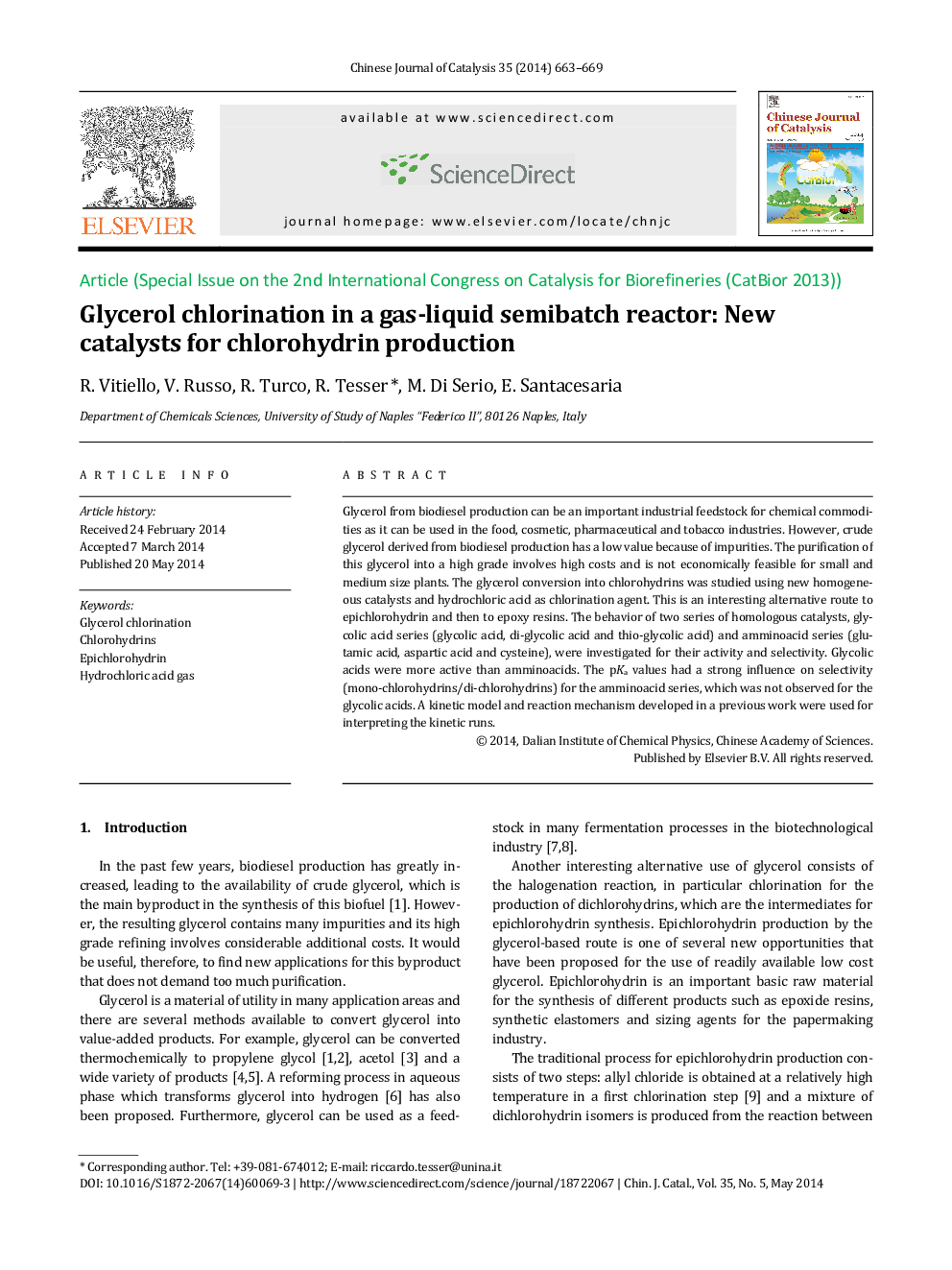| Article ID | Journal | Published Year | Pages | File Type |
|---|---|---|---|---|
| 60112 | Chinese Journal of Catalysis | 2014 | 7 Pages |
Glycerol from biodiesel production can be an important industrial feedstock for chemical commodities as it can be used in the food, cosmetic, pharmaceutical and tobacco industries. However, crude glycerol derived from biodiesel production has a low value because of impurities. The purification of this glycerol into a high grade involves high costs and is not economically feasible for small and medium size plants. The glycerol conversion into chlorohydrins was studied using new homogeneous catalysts and hydrochloric acid as chlorination agent. This is an interesting alternative route to epichlorohydrin and then to epoxy resins. The behavior of two series of homologous catalysts, glycolic acid series (glycolic acid, di-glycolic acid and thio-glycolic acid) and amminoacid series (glutamic acid, aspartic acid and cysteine), were investigated for their activity and selectivity. Glycolic acids were more active than amminoacids. The pKa values had a strong influence on selectivity (mono-chlorohydrins/di-chlorohydrins) for the amminoacid series, which was not observed for the glycolic acids. A kinetic model and reaction mechanism developed in a previous work were used for interpreting the kinetic runs.
Graphical AbstractGlycerol chlorination in the presence of aminoacids and glycolic acids as catalyst was studied. The data were interpreted with a gas-liquid kinetic model and the kinetic and mass transfer parameters were obtainedFigure optionsDownload full-size imageDownload as PowerPoint slide
